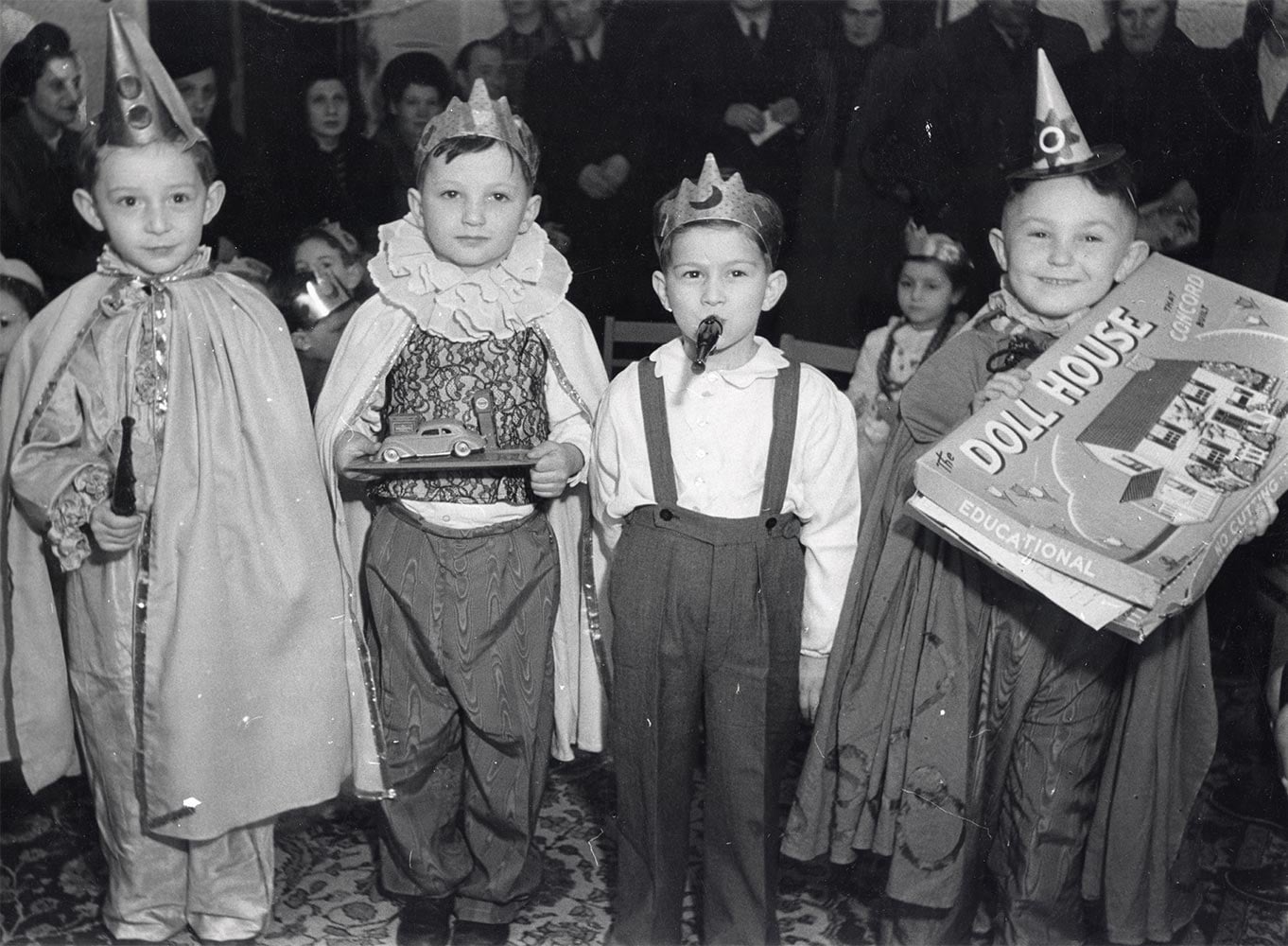- Pulished by
-
JDC at
-
March 12, 2023
Purim is one of the most joyous Jewish holidays in the Jewish calendar. The Jewish holiday is celebrated on the 14th and 15th of Adar (the twelfth month of the Jewish calendar), which usually falls in late February or early March. The Purim story commemorates the events described in the biblical Book of Esther, which tells the story of how the Jewish people were saved from a plot to exterminate them in ancient Persia.

The Purim Story
The story of Purim revolves around story of Esther, a Jewish woman who becomes the queen of Persia. When Haman, a high-ranking official in the Persian court, hatches a plot to kill all the Jews in the kingdom, Esther reveals her Jewish identity to her husband, King Ahasuerus, and pleads with him to save her people. With the king’s help, Haman’s plot is thwarted, and the Jews are able to defend themselves against their attackers.
A group of young Jewish displaced persons pose with their JDC-distributed gifts at a Purim party in Munich. JDC Archives 1940The central theme of Purim is the idea of divine providence – that even when events seem to be working against us, God is always present and working behind the scenes to help us. This is reflected in the name of the festival itself, which comes from the Persian word pur, meaning “lot.” According to the Book of Esther, Haman chose the date for his plot to kill the Jews by casting lots (purim) to determine the most auspicious day.
Purim is celebrated in a number of ways. The festival is traditionally celebrated by the reading of the Megillah, the scroll containing the story of Esther. The Megillah is read in synagogues on the evening of Purim and again on the morning of the holiday. It is customary to make noise whenever the name of Haman is mentioned during the reading, in order to “blot out” his name and symbolically erase his memory.
Another popular custom is the exchange of gifts of food and drink, known as mishloach manot. It is customary to send at least two different kinds of food or drink to at least one other person. The purpose of this custom is to increase feelings of friendship and unity among the Jewish people.
Purim is a joyful celebration. Purim is traditionally celebrated with a festive meal on the afternoon or evening of Purim, and many Jews also celebrate with costume parties and other festive activities. In some communities, it is customary to hold Purimspiels – humorous Purim specific plays or skits that retell the story of Esther in a lighthearted way.
In addition to its historical significance, Purim has important lessons for us today. The festival reminds us of the importance of standing up for what is right, even when it is difficult or unpopular. It also reminds us of the power of faith and the importance of trusting in God’s providence, even in times of darkness and uncertainty.
Overall, Purim is a joyful and meaningful holiday that celebrates the survival and triumph of the Jewish people. It is a time to come together with friends and family, to enjoy good food and drink, and to reflect on the lessons of the past as we look forward to a brighter future.
-
Web Development
-
February 06, 2023
In Bulgaria, One Family Opens Their Home (and Their Hearts) to Ukraine’s Jews
Get updates from The Joint & JDC
It’s the easiest way to keep up to date with all our latest news, events and fundraising activities.
© 2024 The Joint Australia | Partner of American Jewish Joint Distribution Committee, Inc

